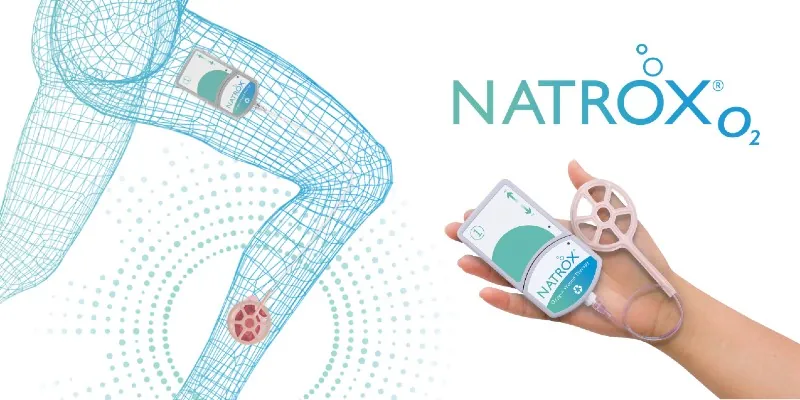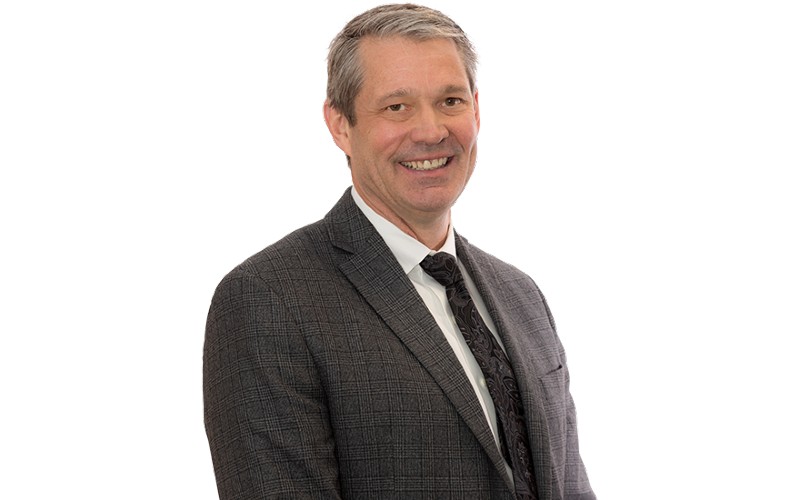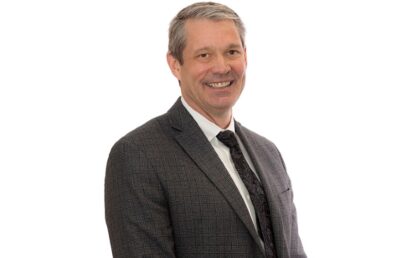An innovative medical device which supports wound healing with oxygen is gaining worldwide traction.
Craig Kennedy, CEO of NATROX® Wound Care – an Inotec AMD brand – says its NATROX® O₂ topical oxygen therapy device is primed to go truly global after “five years of prep work”.
He explained how the Cambridge University spinout’s tech works to BusinessCloud earlier this year. In the intervening months, he says the product has begun to fly.
“In the US we’re waiting for our national reimbursement to be awarded. We expect that to happen in the next several months. So we’re very excited in preparing for that,” Kennedy tells us.
“The Veterans Association in the US is really coming around. That’s been fantastic. We’ve also seen some movement on our reimbursement requests in countries like Colombia and Korea. Plus we’ve recently applied for reimbursement in South Africa.
“Our goal is always to get to as many patients as possible that could use our product.”
The device, which is smaller than an iPhone, uses oxygen to stimulate healing. Designed to help heal chronic wounds, it generates and delivers continuous topical oxygen therapy (cTOT) to patients while being non-invasive and comfortable.
Already available on the NHS, the lightweight wearable NATROX® O₂ device gives patients complete freedom of movement, allowing them to get back to their normal lives while treating their hard-to-heal wounds.

Asia
Kennedy sees a particular opportunity in Asia. “There’s just not that many primary care options for people to go to other than the public hospital,” he explains. “We wanted to change that so we are launching a new product there called NATROX® Wound Solutions.
“It provides all of the necessary wound care services to a primary care facility with the goal of increasing their patient volume: we give people the entire toolbox, all the way from training to products to diagnostics to management of wounds.
“If someone’s interested in adding wound care to their service portfolio, they come to us and we give them everything they need. They have one invoice to issue to get everything – all of the diagnostic equipment, the products.
“We also have an oversight programme so that anytime they feel they have a patient that they may be out of their scope of knowledge with, they can ‘phone a friend’ – we have local wound care experts and international experts that can help them with that patient. Together, we can bridge the gap and reach patients in need.
“We’ve sold our first subscription there and we’ve got two other proposals outstanding.”
Inotec – NATROX® O₂ device heals wounds with humidified oxygen
Top team
Expansion in the region – which will also take in Vietnam, Singapore and Malaysia – will be supported by a team and clinic based in Kuala Lumpur.
Kennedy says NATROX® Wound Care doubled its office and production space at its Cambridge HQ last year and plans to double it again in the next few months. “Demand will outweigh our current capacity by the end of this year,” he adds.
The firm, which topped our MedTech 50 ranking again this year, now employs approaching 35 people globally. “We have phenomenal people running all aspects of the business. They do an amazing job of knowing their customers, knowing what needs to be done and putting the time and effort in to be successful,” he says.
“I put our team up against anybody because they’re seasoned and they’re motivated.”
https://businesscloud.co.uk/medtech-50-uks-most-innovative-medical-technology-creators/
He says names such as chief medical officer Dr Tomas Serena, chief scientific officer Dr Gregory Schultz and advisor Professor Keith Harding CBE “could work for any company anywhere in the world”.
“They choose to work with us because they believe in the product. They’re passionate and motivated to make a real impact. You don’t get a chance to make a big difference in an industry very often in a career – and when you do, it’s fun.”
Manufacturing of the NATROX® O₂ device has been brought in-house to guard against supply chain issues and ensure quality.
Kennedy, a keen long-distance runner, likens the rapid progress this year to “the final two miles of a marathon”, adding: “When opportunity presents itself, you gotta be the first to the party. This part’s been a sprint!
“Post-COVID we saw an opportunity. If I’m honest, it took a little bit of time for us to put together all of the pieces… to understand what we really needed to get to where we wanted to be.
“It was an evolution, probably about 12 to 18 months, that all came together and solidified early this year: this is what the product offering looks like; these are the customers that would be most interested; tweaking our message and the product; and finally making the relationships we needed to have a viable product.”
Clinical
He says awareness of the product has been driven by its focus on collecting clinical data.
“As we get closer to reimbursement in the US, we’ll build up our public awareness because the product will be more readily available. We’ve already done more and more awareness in the VA (the Veterans Affairs Group).
“There’s a lot of ways you can get notoriety – you can shout from the mountaintops and have flashy websites, but if you don’t have clinical evidence and you don’t have proof, none of it makes any sense. We started with the clinical evidence and let it talk for us.
“When we went to our first big wound care conference in Las Vegas in 2018, we sat at the booth – me and one other person – and people walked by us, kind of snickered and kept walking. No one knew who we were, no one believed in oxygen, no one believed that what we were doing was going to go anywhere.
“Yet at the same show this year – held in Washington DC – we had five people manning the booth and people three- or four-deep all day long wanting to see it. The awareness is now there – all because of the clinical evidence.
“We’ve come a long way. When we talk to clinicians now, they’ve heard of us. The momentum is building: we’re on the cusp of going global. It’s an exciting time not just for us, but for patients everywhere.”


